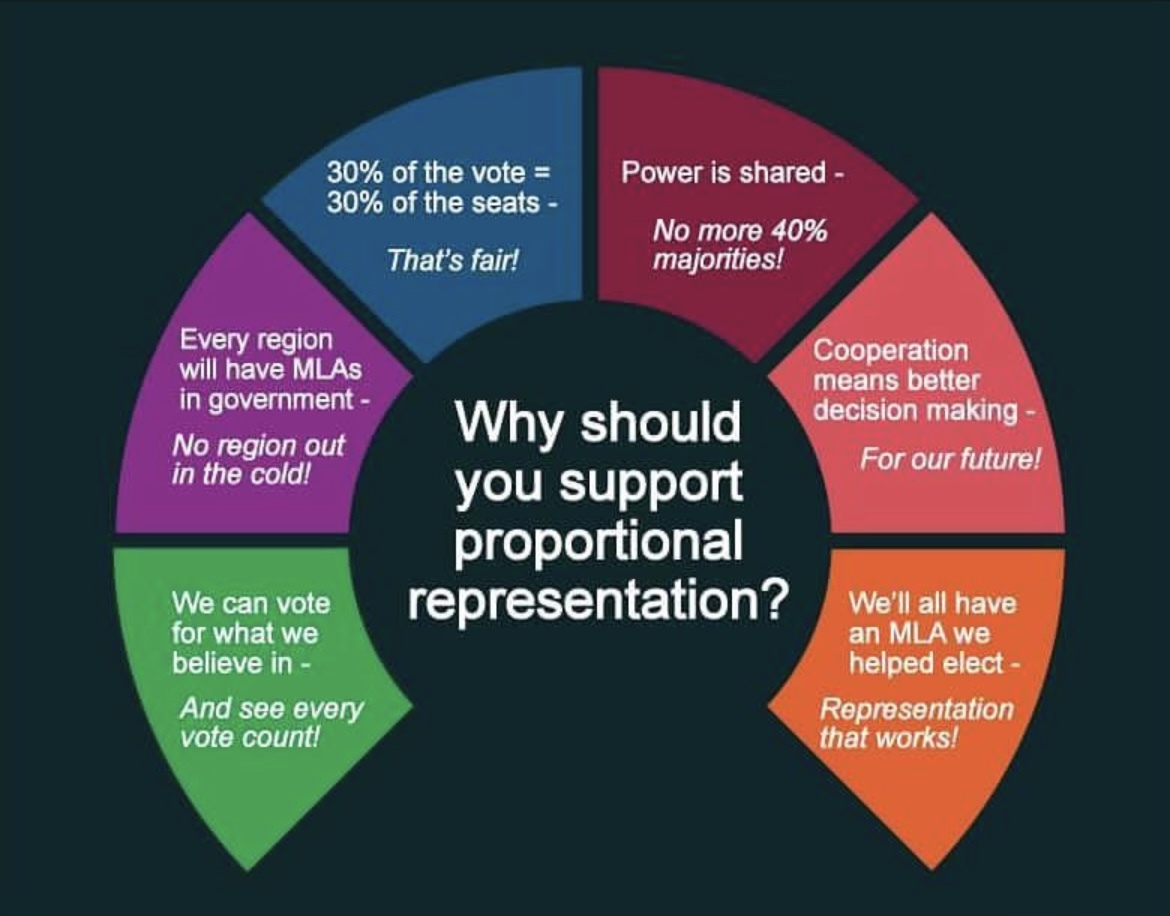FairVote Canada
What is This Group is About?/De Quoi Parle ce Groupe?
The unofficial Lemmy movement to bring proportional representation to all levels government in Canada.
Voters deserve more choice and accountability from all politicians.
Le mouvement non officiel de Lemmy visant à amener la représentation proportionnelle à tous les niveaux de gouvernement au Canada.
Les électeurs méritent davantage de choix et de responsabilité de la part de tous les politiciens.
What is Proportional Representation?
Related Communities/Communautés Associées:
Resources/Ressources:
Official Organizations/Organisations Officielles:
We're looking for more moderators especially those who are of french and indigenous identities.
Nous recherchons davantage de modérateurs, notamment ceux qui sont d'identité française et autochtone.
view the rest of the comments

Question: How do you implement proportional representation without sacrificing the ability of the voters to choose specific candidates?
Primaries and/or ranked choice voting allow for people to know who exactly it is they are choosing to have represent them. Proportional representation generally means that the people are only choosing what party they want, and the party gets to decide who will be their representative. There's any number of reasons why you might support a party in general but oppose a specific politician. I'd much rather have a system where people can potentially weed out terrible candidates, rather than leaving it to the party to decide.
The closest you can likely get without getting overly complex is Single Transferable Vote/Ranked Choice Voting. No system will be precisely proportional and some voting systems work better depending on the governance system in place (I.e., size of electoral districts, number of seats/seats per district. legislative makeup, etc.).
Copying a previous comment of mine:
Someone added that the party leaders could even be added to the list of MPs separately, the moment there's one MP elected for a party the leader is present in the chamber, otherwise the second a party has enough votes to have a seat it first goes to the leader. They would be there for the country, not a specific district.
Who as going to pay for all the chairs? :)
There's more than one way to do it. You can simply have open party list proportional representation, where people vote for who gets on each party list and in what order. Then in the general election everyone picks parties and the seats are awarded proportionally according to the lists that were chosen by the voters.
Or, you can have a open election with any number of candidates running for office from any number of parties. Voters pick candidates using a method that lets them choose as many as they like, like Sequential Proportional Approval Voting. Then the seats are awarded to the winners, with the awarding method being the thing that creates proportional representation.
With the first way it's extra important that candidates appeal to the party's base. With the second way there's potentially multiple strategies for winning a seat.